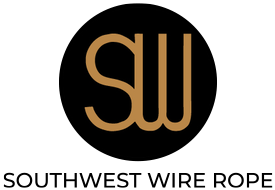Rigging inspections are crucial for keeping your job site safe and compliant. Regular inspections help to identify hazards and prevent accidents – but what happens on the day of the inspection, exactly?
Here is a comprehensive review of what you can expect during your rigging inspection.
Pre-Inspection Prep
It’s important to have maintenance records, equipment manuals and other relevant documents ready before the inspector arrives. Make sure they are complete, up to date and legible.
Additionally, remove any debris from your work site and place all of your equipment back in its proper position. An organized job site plays more of a role in safety than most realize, and creates less of a red flag for inspectors when they arrive.
Visual Inspection
Inspections typically begin with a visual assessment of your rigging equipment. The inspector will examine your crane, wire rope, slings, tags, cables, chains, hooks, shackles and other rigging components for signs of wear and tear.
Common examples of wear on rigging equipment include corrosion, kinks and abrasion on wire rope, cranes with improper fluid levels or tire pressure and visibly warped or deformed equipment. Debris, spills and errant equipment on your work site will also be noted, along with improperly-labeled tags.
Load Testing
Load testing is exactly what it sounds like, and is a crucial part of any rigging inspection. It involves subjecting the lifting equipment to a load to ensure it can handle that load safely.
These tests are performed through a variety of methods, including weights and hydraulic equipment. After planning and setup, the inspector will apply a predetermined load in increments while measuring data such as strain and deflection.
Inspectors will also observe how your equipment handles its maximum load capacity in what is known as a peak load test.
Final Verdict
The data your inspector gathers is analyzed to determine which of your equipment needs to be repaired or swapped out. The inspector may also determine the need for operator training to ensure a safe and compliant work site. Promptly address recommendations from inspection services and schedule follow-up inspections for continued safety.
Get Prepared With Southwest Wire Rope
By understanding what goes on during a rigging inspection, you can better prepare your site for the visit and ensure safer lifting operations. Southwest Wire Rope offers on-site field inspection services, load testing and more to ensure work-site safety.
The advice of a qualified expert can help you ace your rigging inspection with flying colors. Contact Southwest Wire Rope today to learn more.
